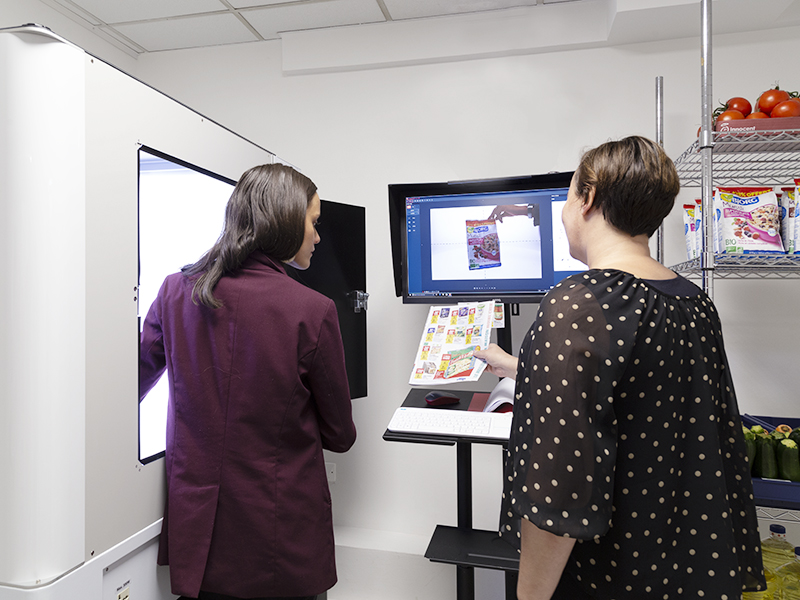Guidelines and latest trends for your social media product photos
What’s the visual code you need to follow to promote your products on social media? From new trends to technological innovations via artificial intelligence, your social media product photos are more important than ever as the cornerstore of your communication strategy. And in mobile formats, visuals that are reactive and interactive are essential to building a great customer experience.
1 – Showcase brands and products on your social media accounts
Several studies have shown that static products images generate up to 4 times more engagement than any other type of post on social media. Ensuring that your images match the visual universe of your brand (whether you sell toys, electronics, luggage, handbags, food products or anything else) will reinforce your company identity for visitors who see your posts. Each social media network has a specific style and format that you will have to follow if you want to generate more engagement with your product photos. A couple of examples: on Facebook, try to focus on news (new items, product promotions, special offers and gift boxes). For Pinterest, create sets of images around a specific theme, like a collection of products or more typically a set of “inspirations”. For instance, you could create a tableau of photographs that are all about cuisine, or a collection of winter clothes for children. Finally, Instagram is all about visual trends, which are often shaped by Instagram users themselves — like flatlay (more details in part 4).

2 – Create closeness and interact with your online customers
Consumers enjoy sharing, liking, tweeting, and commenting on social media posts. This is a key aspect of social media use for online entrepreneurs to capitalize on. Social media product photos elicit greater engagement. So don’t hesitate to use them to increase customer engagement. When you post a photo composition of several lipsticks on a white background, add a caption that will encourage visitors to engage. “Tell us: which lipstick is your favorite? Which one would make the best gift?” Questions like these elicit more comments, and they help spread your content. Through the networks of users who engage, putting your posts at the top of their contacts’ social media feeds.

3 – Think of social media tools as sales channels
For the last few years, social media networks have been adapting to e-commerce. Take Pinterest, for example. In 2015 it introduced e-commerce connected pins. That allow users to click on a CTA (Call To Action) and purchase products directly. Instagram followed suit in 2016 by optimizing its sales button. This social network make it more direct and interactive, creating a fluid purchase experience. Other social media networks like Google or Facebook have set up truly innovative e-commerce services. On Facebook Messenger, a “bot” will answer user’s requests and send product suggestions with photographs. Voice recognition and artificial intelligence assist consumers through the buying process.
Mark Zuckerberg presenting Facebook Messenger ChatBot
4 – BE RESPONSIVE IN THE FACE OF NEW PHOTO TRENDS
Social media users – your clients – are the ones starting new online trends. “Food porn” and flatlay on Instagram are among the best-known examples of social media product photos. The 2016 flatlay trend is all about creating minimalist visuals. It’s a lot like a packshot: several products are shot on a flat surface, displayed geometrically against a neutral background. It’s a big trend among top Instragrammers, and as of January, it accounted for nearly 2 million posts on Instagram. It’s especially big in fashion, food, wine and spirits, technology, cosmetics and eyewear. For online entrepreneurs who want to communicate a simple message and present products in the most efficient way possible, it’s a perfect tool for visual creativity.

An example of a flatlay packshot photo (flat photo taken from above)
5 – Taken the reins by mastering your social media product photos process
Creating flatlay products images, announcing new collections, posting previews of the latest arrivals on your social media accounts or your website. All of these challenges demand fast response times. Turning physical stock into digital stock can take too long. It may be worth producing your own so you can be more responsive in the face of new arrivals, new trends, and use multiple platforms for internal or external communications with ease. There are plenty of questions to consider before you make a choice, from in-house service providers to acquiring a Packshot photo studio.
E-commerce, m-commerce and social media:
Since 2015, smartphones have become the most popular means to go online. In 2016, mobile browsing made up over 50% of web traffic. M-commerce has doubled since 2014, and this links back to social media. 70% of French internet users are browsing!
Become the photographer of your products
Other posts you might be interested in :

Kappa gives its motivations for a PackshotSpin acquisition
The official online shop of the well-known Italian brand Kappa, offers equipment, accessories and sport clothing for men, women and kids.

E-commerce: 6 practices to boost your conversion rate
It’s a tall order: persuading your prospects to purchase a product without having previously handled it. We need to touch and see in order to appropriate an object, and thus desire to have it.

3 good practices for organizing your pictures production
We would like to examine, in this continuation of our 4-post series, the best practices which will make the acquisition of a packshot photo studio a success.